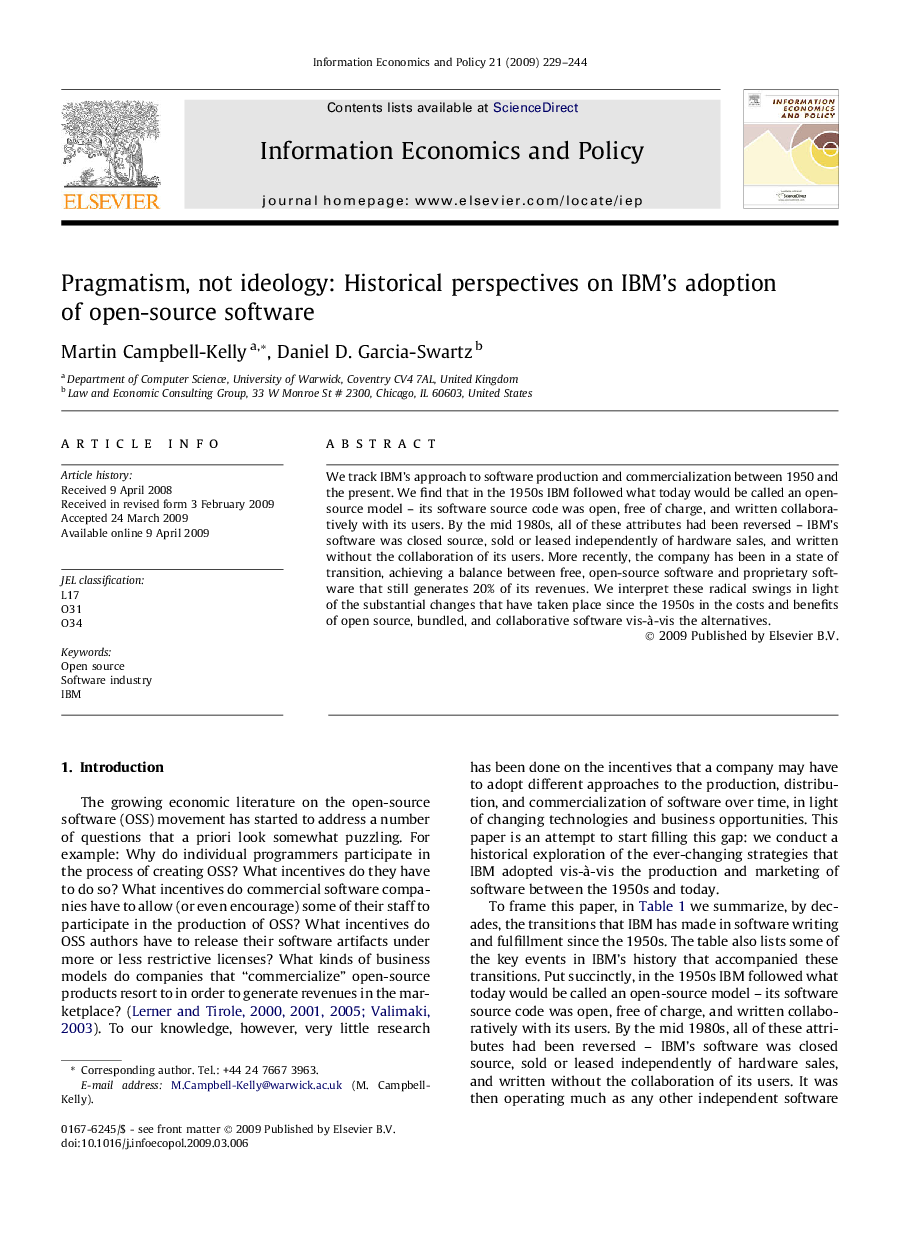| Article ID | Journal | Published Year | Pages | File Type |
|---|---|---|---|---|
| 5075862 | Information Economics and Policy | 2009 | 16 Pages |
Abstract
We track IBM's approach to software production and commercialization between 1950 and the present. We find that in the 1950s IBM followed what today would be called an open-source model - its software source code was open, free of charge, and written collaboratively with its users. By the mid 1980s, all of these attributes had been reversed - IBM's software was closed source, sold or leased independently of hardware sales, and written without the collaboration of its users. More recently, the company has been in a state of transition, achieving a balance between free, open-source software and proprietary software that still generates 20% of its revenues. We interpret these radical swings in light of the substantial changes that have taken place since the 1950s in the costs and benefits of open source, bundled, and collaborative software vis-Ã -vis the alternatives.
Related Topics
Social Sciences and Humanities
Business, Management and Accounting
Management of Technology and Innovation
Authors
Martin Campbell-Kelly, Daniel D. Garcia-Swartz,
